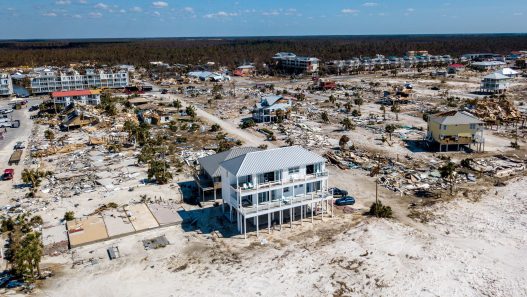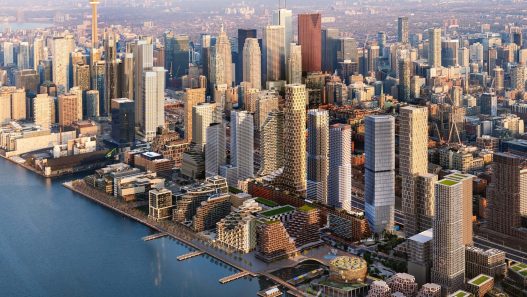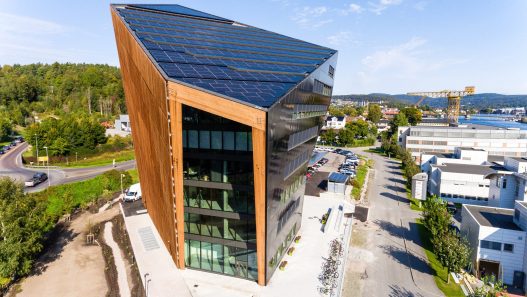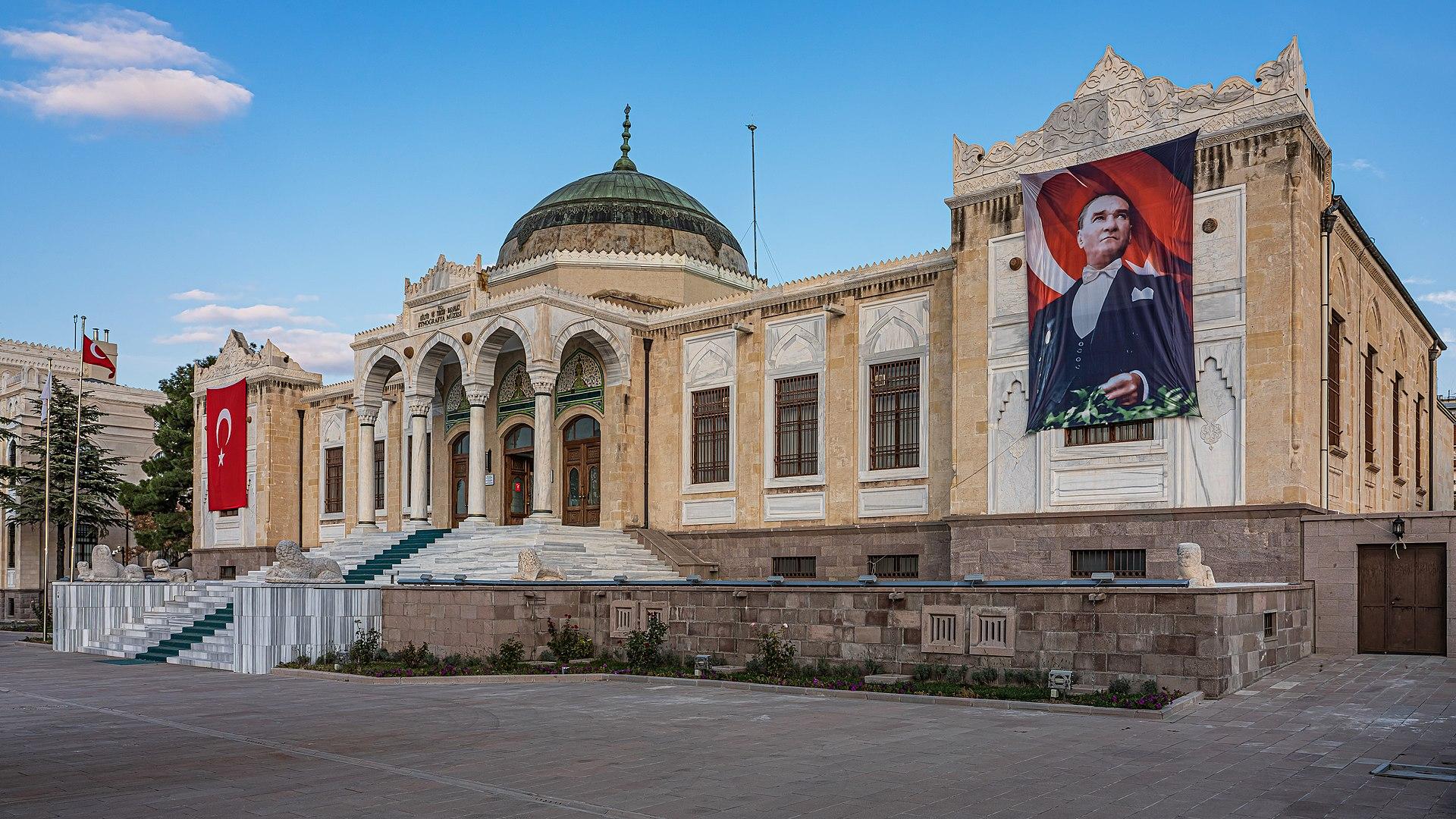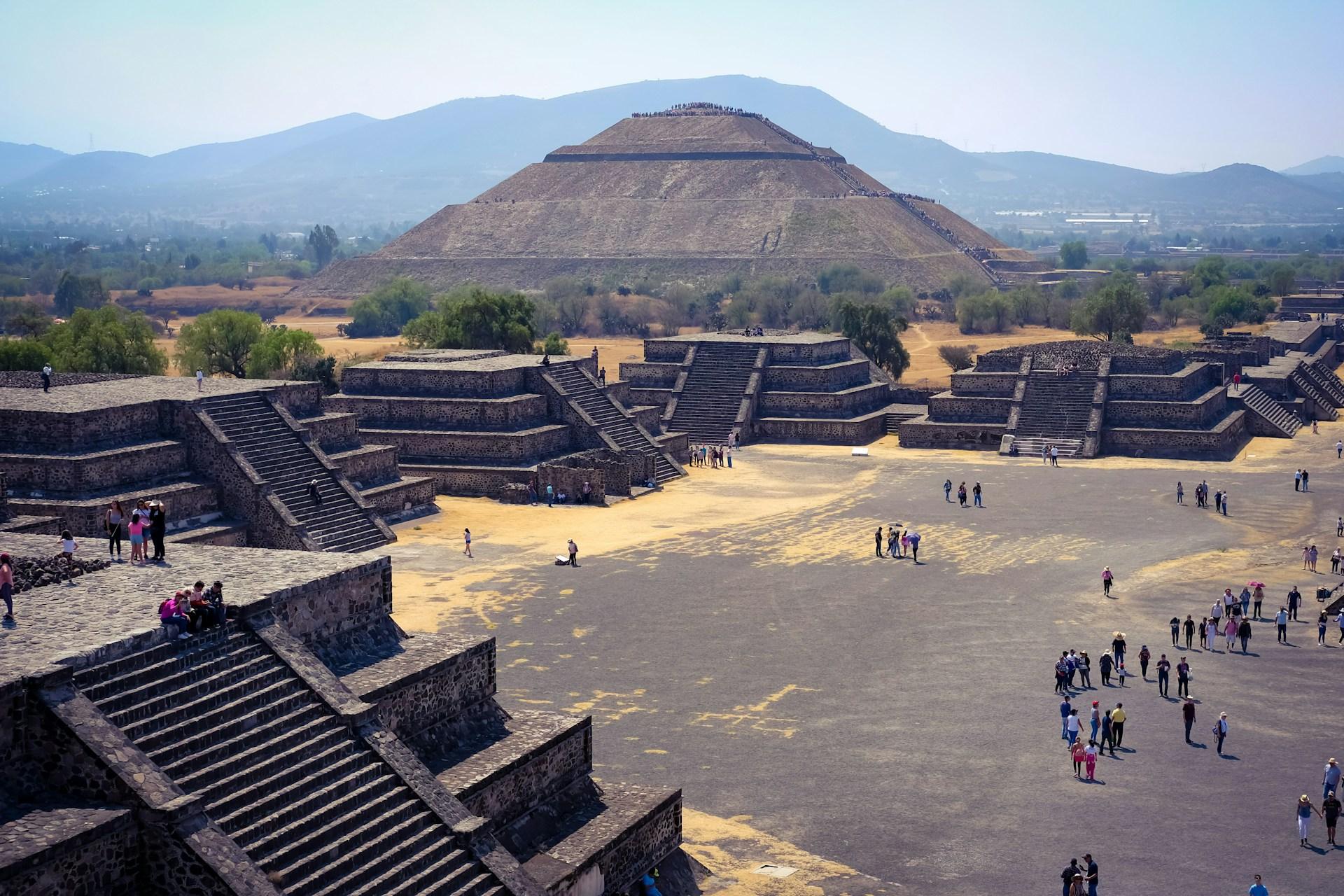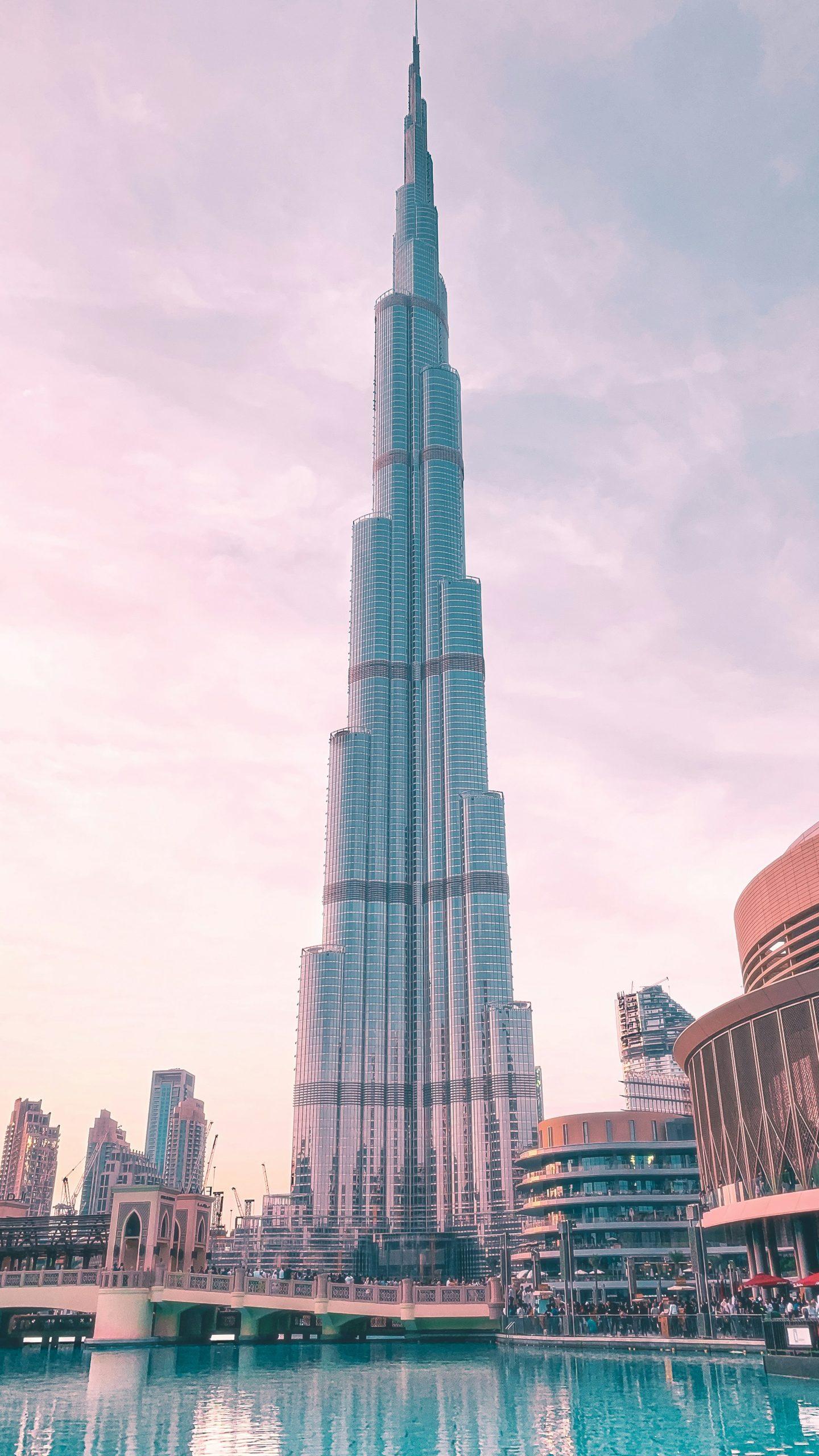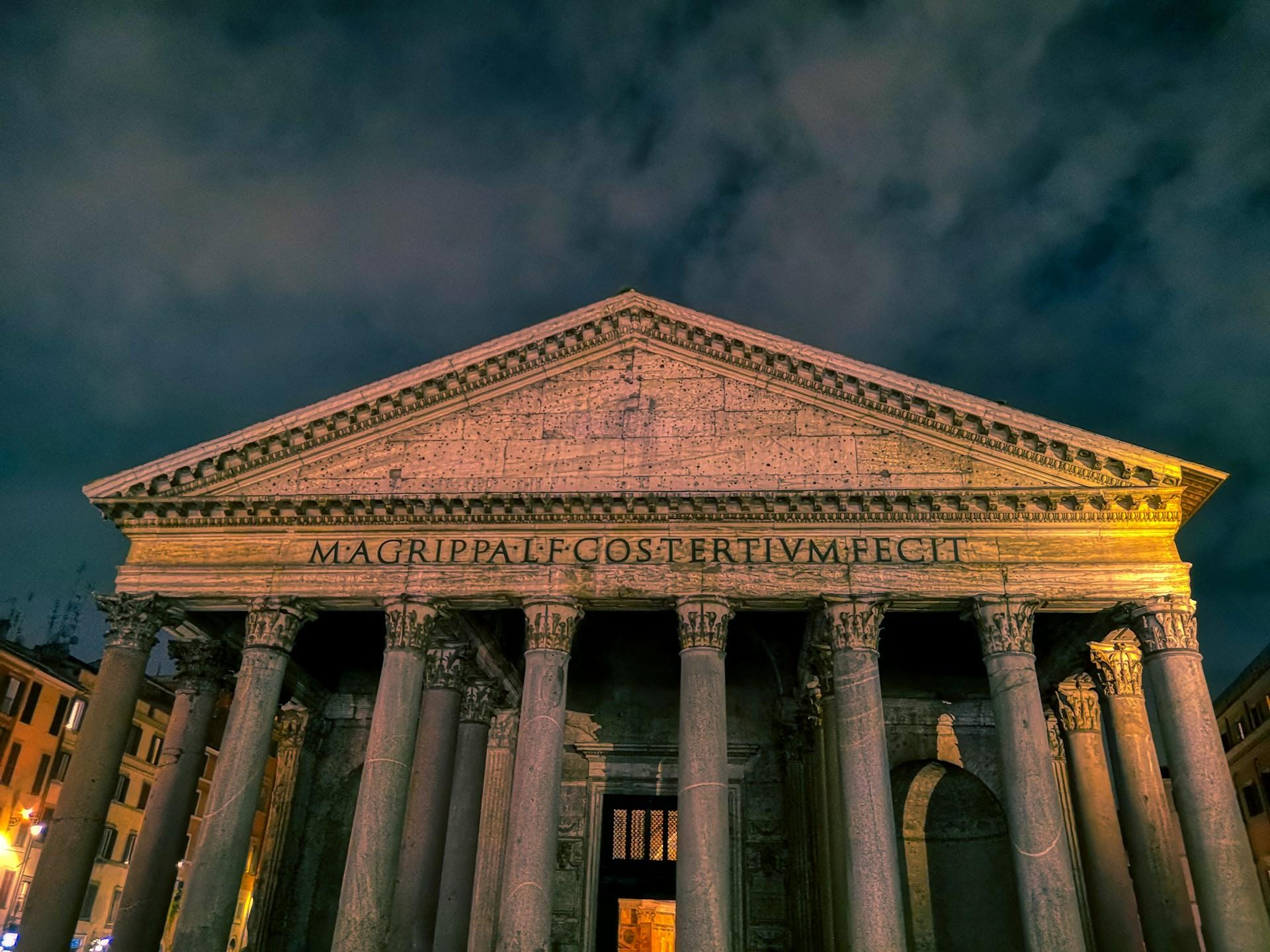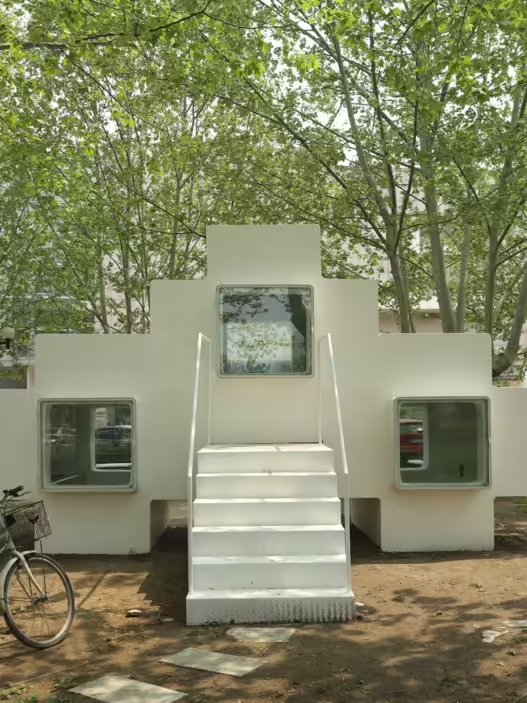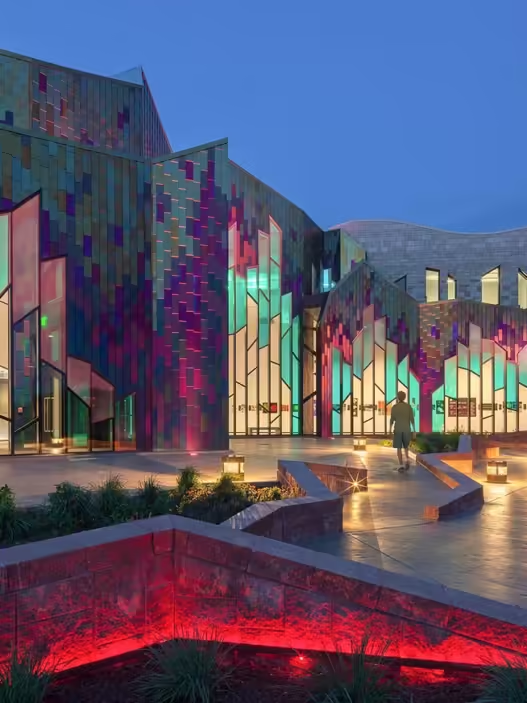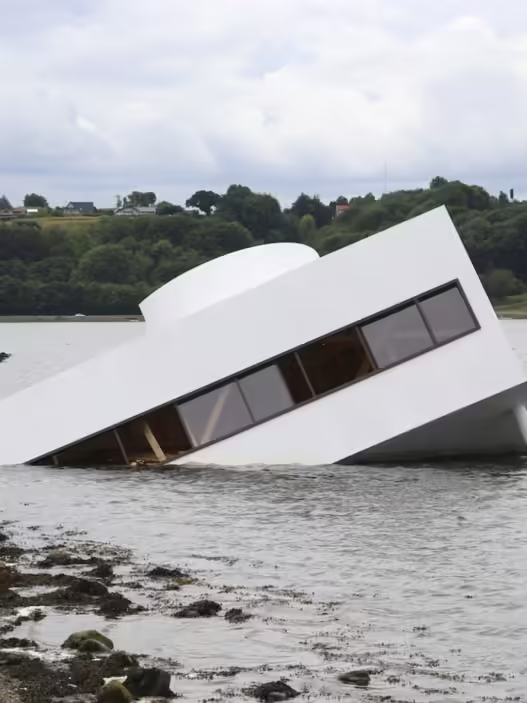Machu Picchu is one of the most impressive and mysterious structures in the world. Masterfully placed on the steep slopes of the Peruvian Andes, this ancient city is considered one of the most important cultural, religious and administrative centers of the Inca Empire. A brilliant feat of engineering, this architectural marvel has survived to the present day and continues to fascinate thousands of people.
Machu Picchu’s architectural subtleties show incredible harmony and respect for the natural environment. This ancient city was built in harmony with its surroundings; the terraces, water management systems and stone structures, designed in accordance with the slope of the mountains, create a majestic harmony in harmony with the environment.
Machu Picchu’s architecture reflects the craftsmanship and engineering skill of the Inca civilization. By perfectly crafting the local stones, the city’s structures are not only sturdy and durable, but also aesthetically spectacular. The careful placement of each stone has ensured that the structures have survived for many years.
Let’s explore this magnificent ancient city together.

Important Information
- Machu Picchu, İnka İmparatorluğu’nun muhteşem bir örneği olarak kabul edilir ve muazzam taş işçiliğiyle dikkat çeker.
- Site, 15. yüzyılda inşa edilmiş olup, And Dağları’nın zirveleri arasında yer alır ve etkileyici bir manzara sunar.
- Yapı, çeşitli bölümlerden oluşur, özellikle Tapınak Alanı, Kraliyet Mezarları ve Çiftçi Evleri dikkat çeker.
- İnka mimarisindeki çarpıcı özellikler arasında kesme taşların mükemmel bir şekilde uyumlu olması ve zikzak şeklindeki duvarlar bulunur.
- İnka mühendisliğinin bir başka önemli özelliği de teraslı tarım sistemlerinin kullanımıdır, bu da Machu Picchu’da görülür.
- Machu Picchu’nun mimari planı, astronomik gözlemleri de içeren karmaşık bir düzenleme ile dikkat çeker.
- Yapı, depremlere dayanıklı olduğu düşünülen gelişmiş yapı teknikleri kullanılarak inşa edilmiştir.
- Machu Picchu’nun mimarisi, çevresel faktörlerle uyum içindedir ve yerel kaynakları etkili bir şekilde kullanır.
- Site, İnka kültürünün önemli bir sembolü olup, korunması ve korunması için uluslararası ilgi çekmektedir.
- Machu Picchu’nun mimarisi, dünya mirası olarak kabul edilir ve turistler için önemli bir ziyaret noktasıdır, tarih ve mimari meraklıları için büyüleyici bir deneyim sunar.
The Discovery of Machu Picchu
The discovery of Machu Picchu is one of the major milestones in archaeological history. In 1911, the American archaeologist Hiram Bingham discovered this ancient city by chance. Bingham’s discovery sparked worldwide interest and provided important insights into the history and architecture of Machu Picchu.
The discovery of Machu Picchu was seen as the discovery of one of the lost cities of the Inca Empire. This ancient settlement sheds light on the mysterious and fascinating past of the Inca civilization. The preserved structure of the city is an important example of Inca architecture and planning skills.
Machu Picchu’s architectural details were also revealed through the process of exploration. The terraces, temples, palaces and other structures in the city showcase the excellence of Inca stonemasonry. The precise joining of stone blocks demonstrates the superior skill of Inca engineering.
“The discovery of Machu Picchu is considered a landmark in the history of world archaeology.”



Bingham’s discovery helped Machu Picchu gain worldwide recognition and be included on the UNESCO World Heritage List. This ancient city has become an important center of world tourism and is visited by thousands of tourists every year.
The discovery of Machu Picchu has aroused great interest in the field of archaeology and increased our interest in ancient civilizations. This magnificent city is a precious legacy of Inca culture and architecture and continues to guide us through the depths of history.
Inca Architecture and Aesthetics
Inca architecture is characterized by its durable stone construction and Machu Picchu is one of the most impressive examples of this architectural style. The precise joining and perfect harmony of the stones showcases the superior skills and aesthetic sense of Inca engineering.
Inca architecture is dominated by rectangular or square buildings. Especially temples and palaces were built with plans based on these geometric shapes. In addition, Inca architecture utilized natural elements and placed the buildings in harmony with the natural environment.
When we look at the details of the buildings in this mystical city, we see that carvings, reliefs and geometric patterns are frequently used. These decorations are associated with religious beliefs in the Inca culture and emphasize the spiritual meaning of the buildings.
Stonemasonry and Construction Techniques
| Construction Technology | Stonemasonry Features |
|---|---|
| Cross Merge | Durability provided by locking the corners of the stones |
| Wear and Friction | Fastening stones by frictional force |
| Vibration Absorber | Resistance to vibrations such as earthquakes |
| Overclocking Effect | Rough surface of the stones when viewed up close |
The stones used in Inca architecture were carefully processed and combined with great skill. The perfect harmony of the stones increases the durability of the buildings and at the same time offers an aesthetic appearance. Inca engineering, stonemasonry and construction techniques were at an astonishing level.
“The structures of Machu Picchu are among the most elegant examples of Inca architecture. The precise combination of stones and detailed ornamentation enhance the aesthetic value of these works.”
Machu Picchu Structures
Temples
The temples at Machu Picchu play an important role in Inca culture. Their architectural design and mysterious functions reflect the deep devotion to Inca religion.
The temples served as religious centers. Each temple was dedicated to different gods and had architectural details reflecting complex belief systems.
Palaces
The palaces in Machu Picchu are special places where the Inca elite lived. These palaces stand out with their rich decorations and unique architectural features.





Terraces
The terraces of Machu Picchu offer important clues about how agriculture was practiced in the city. These terraces have been carefully planned to enable agricultural activities to be carried out effectively.
Other Structures
Machu Picchu also has many other structures. These include warehouses, fonts and squares.
What is remarkable about all these structures is the excellence of Machu Picchu’s stonework. The structures are solid, durable and aesthetically impressive. Built with Inca construction techniques, these stone structures are still awe-inspiring even today.
Royal Palaces
The royal palaces in Machu Picchu offer important clues to the architectural and historical significance of the city. These palaces were built specifically for the important leaders and royal family of Machu Picchu. Perched on high hills, these palaces display elegant architecture that adds to the overall structure and beauty of the city.
The royal palaces are meticulously planned and carefully decorated spaces. The carved stones and wooden decorations in the interiors are a perfect example of Machu Picchu’s construction skill and aesthetic sense. These structures contain religious and ritual rooms that reflect the symbolic importance of the Inca culture.
Each palace has a different function. Some are used as residences, while others serve ceremonial and administrative purposes. The planning of the palaces effectively connects the interior spaces, corridors, courtyards and gardens. This planning has been carefully thought out to guarantee functionality and comfort in the daily life of the royal family.
Important Royal Palaces in Machu Picchu
| Palace Name | Function | Description |
|---|---|---|
| Intihuatana Palace | Royal residence | It is a residence where the royal family lived and held ceremonies. It attracts attention with its finely crafted stones and view. |
| Hatun Rumiyoc Palace | Queen’s residence | It is a place where the queen lived. At first glance, it looks like a simple building, but the sophisticated decoration and inlaid stones inside show architectural skill. |
| Runkurakay Palace | Administrative center | It was the administrative center of the Inca empire. This palace is known as a place where the highest level decisions of the Inca government were made. |
These royal palaces are just a few examples of Machu Picchu’s important structures that illustrate the rich history and architectural heritage of the Inca culture. Each one has a unique story and remarkable details. For visitors to Machu Picchu, these palaces offer the opportunity to embark on a fascinating journey of the past.
Temples and Sanctuaries
Temples and sanctuaries, famous for Machu Picchu’s mystical atmosphere, form an important part of the city’s architectural structure. Religious worship at these sites reflects the cultural and historical values of the city. At the same time, the architectural details and decorative elements of the temples are an important part of Machu Picchu’s unique architecture.
The temples are often elaborately designed structures, characterized by geometric arrangements and symbolic forms. When analyzed in terms of their fine details and stonework, the architectural analysis of the temples offers interesting results. It is possible to observe how the Inca symbols and figures, which are frequently used in decorations, were included in the architectural planning of the temples.
Temples were of great importance in Inca culture. These sacred spaces were used to worship the gods and served as the central points of religious ceremonies.




One of the remarkable features of temples is that they are built in harmony with nature. For example, some temples were built on natural rocks and terraces offering impressive views. These structures served both as places where religious rituals were performed and contributed to the spiritual experience.
The detailed analysis of the architectural structure of the temples at Machu Picchu offers a projection of the religious beliefs and architectural aesthetics of the Inca culture. These structures contribute to the mystical and mesmerizing atmosphere of the city and offer visitors a historical and cultural experience.
Terraces and Miraculous Agriculture
The terraces and agricultural fields at Machu Picchu are a part of the city of great architectural and engineering significance. These terraces are equipped with an incredibly complex irrigation system and played a vital role in the conduct of agricultural activities.
In the mountainous and rugged geography of Machu Picchu, terraces were built to increase the areas available for agriculture and facilitate access to fertile soil layers. These terraces enabled an impressive agricultural activity to take place despite the lack of resources in the city.
These terraces are considered a great feat of architectural planning and engineering. Each terrace was carefully organized to ensure efficient distribution of water. Irrigation canals and water storage units have helped to provide the necessary water resources to sustain agriculture.
| Terrace | Architectural Planning | Engineering Details |
|---|---|---|
| Terrace 1 | Traditional Inca geometric planning | A complex canal system for water distribution |
| Terrace 2 | Specially designed for various agricultural crops | Water reservoirs and supply channels |
| Terrace 3 | Designed for high-yield rice and maize production | Stone walls for leveling the soil |
These terraces supported Machu Picchu’s miraculous agriculture and ensured the sustainability of the city. Agricultural activities are crucial for the sustenance of the people living in the city, and these terraces allowed for a high level of agricultural production.
The architectural and engineering achievement of Machu Picchu’s terraces and miraculous agricultural landscapes reflects the clever planning that went into the construction of the city and the high level of agricultural knowledge of the Inca culture. These terraces are an important part of Machu Picchu’s architectural heritage and form part of the city’s unique identity.
Waterways and Water Supply System
Machu Picchu’s waterways and water supply system are an important part of the city’s architectural arrangements. Reflecting the robustness and efficiency of Inca engineering, this system is crucial for the city’s water supply.
Machu Picchu’s terrain and location determine the use of water resources. The city has a plumbing system fed by waterways that run along the higher parts of the mountain. These waterways collect rainwater and provide water for terrace agriculture, houses and other structures in the city.
Inca engineers used a variety of methods to ensure the city’s water supply. Waterways are cleverly planned systems that allow water to flow naturally with an optimized slope. As it flows along the terraces, these waterways ensure that water is captured at the right points and used for water consumption.
Machu Picchu’s water supply system is the result of a delicate balance. It meets the water needs of the entire city while minimizing wastage. Inca engineering techniques made it possible to distribute water equitably and ensure that every house, farmland and building had access to water.
This water supply system ensured the survival of Machu Picchu and helped keep the city successfully functional. Reflecting Inca engineering skills, this system is an important part of Machu Picchu’s architectural heritage.
| Waterways and Water Supply System Features | Description |
|---|---|
| Natural flowing waterways | This system ensures efficient water distribution, allowing water to flow down the terraces at Machu Picchu. |
| Precise water distribution | Inca engineering techniques are used to ensure that water is equitably distributed throughout the city and is accessible everywhere. |
| Preventing water waste | The optimized slope of the waterways prevents unnecessary loss of water and ensures an efficient water supply system. |
| Source water utilization | Machu Picchu meets its water needs by using rainwater and mountain springs. |
Machu Picchu’s Waterways
The waterways at Machu Picchu are a complex system carefully planned and constructed by Inca engineers. These waterways were constructed using special grinding techniques called stone scaffolding and were designed to allow water to flow by natural slope and gravity. This allows the water to make its way down the terraces and into the main water sources that supply the city’s water needs.
Machu Picchu’s waterways are an integral part of the city’s water supply system and ensure its continued survival. This system is a testament to the superior architectural and engineering skills of the Inca engineers and emphasizes the historical and cultural significance of Machu Picchu.
Defense Structures and Security
Machu Picchu was a city protected by defensive structures as well as the natural obstacles surrounding it. These defensive structures played an important role in protecting the city against enemy attacks during the Inca’s own time.





The city walls were the most prominent defense mechanisms surrounding the outside of Machu Picchu. These walls were strategically positioned to protect the city against attacks from outside. The height and sturdiness of the walls made it difficult for enemy attacks.
Watchtowers
Watchtowers in the city were used to detect enemy attacks and as an early warning system. These towers were built at strategic points and were elevated to provide a bird’s-eye view of the city. Watchtowers were an important part of the defense strategy at Machu Picchu.
The city’s narrow passageways and labyrinth-like street layout were also designed for defense. These narrow passages were used to prevent the advance of enemies and facilitate defense. Street organization was part of the security measures in the city.
Struggle and Security
Machu Picchu also has sections that could be used as defense structures. These areas could have been used, if necessary, to strengthen the city’s defenses against external attacks. At the same time, the city’s large squares could also be used for combat and security purposes.
The defensive structures and security measures at Machu Picchu were intended to protect the inhabitants of the city. These structures were conceived as part of Inca architecture to ensure that life in the city was safe and secure.
Stonemasonry and Construction Techniques
To understand the unique architecture of Machu Picchu, it is important to pay attention to the stonework and construction techniques. The stones used in the city were very carefully crafted and special techniques were used to ensure the stability of the structures.
Stone Processing
The stones used at Machu Picchu were specially selected and processed. The builders worked precisely to cut the stones very straight and even. The stones were marked at predetermined points to be joined together after they were finished. These marks ensured that the stones were placed in the correct position.
Joining the Stones
A special technique was used to join the stones at Machu Picchu. The stones were worked in such a way that they fit together perfectly and were put together without the use of mortar. This not only makes the structures strong and durable, but also aesthetically impressive.
Unique Features
The stones used in Machu Picchu are impressively crafted. Each stone is harmoniously combined with the others, ensuring the integrity of the structure. This mastery of stonemasonry has given the city a unique architectural beauty.
| Stonemasonry and Construction Techniques | Description |
|---|---|
| Stone Processing | The stones used in Machu Picchu are very smooth and sharp. |
| Joining the Stones | The stones are fitted to each other without the use of mortar. |
| Unique Features | The stonework at Machu Picchu ensured the durability and aesthetic appearance of the structures. |
Geometric Planning of Machu Picchu
Machu Picchu is a unique architectural masterpiece of the Inca Empire. In this section, we will give detailed information about the geometric planning and architectural design principles in the city. We will examine the street layout, the placement of buildings and the ideas behind this layout.
“The geometric planning of Machu Picchu combines the functionality and aesthetics of the city. The layout of streets and buildings has been carefully thought out to facilitate the daily lives of the city’s inhabitants.” Müzeyyen Gözen
The complex geometric planning of the city is associated with the low position of Machu Picchu and the narrow space on which it was built. The uniqueness of the surface topography played a decisive role in the layout of the city’s buildings and streets.
City Buildings and Street Layout
The buildings and streets in Machu Picchu are arranged in a geometric pattern. The city is divided into sections to meet various needs. For example, temples, royal palaces, residences and agricultural fields are located in different areas.



In addition, the streets were also designed to support the functioning of the city. Narrow and winding streets allowed the inhabitants of Machu Picchu to easily navigate their daily lives. The layout of the streets was designed to facilitate public transportation, water supply and communication in the city.
Architecture and Symbolism
Symbolism plays an important role in the geometric planning of Machu Picchu. Symbolic meanings are expressed in the layout and stonework of the buildings. For example, some important buildings are aligned to specific mountain peaks or astronomical events in the sky.
In addition, geometric planning and architectural design emphasize the sacred and spiritual significance of the city. Some of the buildings in Machu Picchu are decorated with mythological symbols, which play an important role in Inca culture. These symbols add a mystical atmosphere to the city and leave a deep impression on visitors.
| Geometric Planning Features | Description |
|---|---|
| Street Layout | Narrow and winding streets are designed to ensure easy circulation of residents. |
| Placement of Buildings | The structures at Machu Picchu are placed in different areas to fulfill various needs. |
| Symbolism | The symbols used in the buildings express mythological and religious meanings in Inca culture. |
The geometric planning of Machu Picchu emphasizes the architectural and cultural significance of the city. It is carefully designed to facilitate the flow of life in the city, to express meanings through symbols and to offer visitors an unforgettable experience.
Architecture and Spirituality in Inca Culture
The architecture of Machu Picchu is not only a physical structure, but is also tightly linked to the Inca culture and spiritual belief system. For the Inca people, architecture was not just about building a house or temple; it was also a means to reflect cosmic order and spiritual balance. Therefore, the architectural design and structure of Machu Picchu is a reflection of the rituals and belief systems in Inca culture.
For the Inca people, nature and the universe were sacred. To them, the natural elements and phenomena everywhere represented the presence and power of the gods. Therefore, the architecture of Machu Picchu was built in harmony with the natural environment. The shape of the mountains and the natural rocks played a major role in the layout of the spaces and the design of the structures. Machu Picchu’s architectural planning, respectful of the environment and natural resources, is an expression of the Inca belief system.
Spiritual Centers and Sacred Sites
Some of the structures in Machu Picchu were considered important spiritual centers in Inca culture. The rituals and ceremonies performed in these structures aimed to help people communicate with the gods and achieve spiritual balance. Temples, priestly dwellings and sacred sites, together with their architectural details, reflect the Inca belief system and spiritual practices.
The architectural details of Machu Picchu are an expression of symbols and symbolism in Inca culture. The geometric patterns, lines, figures and motifs used in the buildings are indicative of the Inca belief system and spiritual values. These symbols were used to balance energies, invoke positive forces and live in harmony with the natural world.
| Temples | Spiritual Centers |
|---|---|
| The temples in Machu Picchu are sacred places where important worship and rituals were performed in Inca culture. In these structures, ceremonies dedicated to the gods were held and life was lived in harmony with the belief system. Temples were often built on mountains or natural rocks and symbolically represented height. | The spiritual centers at Machu Picchu are places that people in Inca society used to balance energies, meditate or find spiritual peace. These places usually have a quiet, peaceful environment and are designed to best reflect the energy of the natural surroundings. |
The architectural and spiritual significance of Machu Picchu reflects the Inca culture’s deep belief system, aesthetics and philosophy of living in harmony with nature. This mystical city is not only a physical heritage, but also an expression of the spiritual and spiritual past of the Inca people.
Restoration and Conservation
Restoration and conservation efforts to maintain the architectural and cultural significance of Machu Picchu are being carried out with great care. Restoring the city’s buildings and preserving them for future generations is vital to the preservation of Machu Picchu’s architectural heritage.
Machu Picchu’s restoration work is carried out by specialized archaeologists, architects and restoration specialists. These works are carried out to preserve the original design of the buildings, repair structural damage and maintain the aesthetic value of the city.
The restoration process takes into account the stonework of Machu Picchu’s structures. Experts take great care to ensure that the stone blocks are correctly placed and that the structures are restored in harmony with their natural surroundings. In this way, Machu Picchu’s architectural features and aesthetics are preserved, offering visitors its original beauty.
Machu Picchu’s restoration works are being carried out with great care due to the fact that it is a UNESCO World Heritage Site. This ensures that the world’s cultural heritage is preserved and passed on to future generations.
The restoration projects also include measures to ensure that visitors can explore Machu Picchu safely and enjoyably. Measures such as reinforcing paths and stairways, installing safety barriers and constructing protective fencing ensure that visitors are able to explore the structures and remain safe as they move around the city.
Machu Picchu’s restoration work ensures that the original architectural design of the buildings is preserved and that the city’s historical heritage is passed on to future generations. Thanks to these efforts, Machu Picchu’s unique architectural structure and cultural significance will live forever.
Tourist Importance of Machu Picchu
Machu Picchu is a major tourist attraction worldwide for its historical and architectural details. This unique ancient city is located in the Cusco region of Peru, at the summit of the Andes Mountains. Thanks to its historical and architectural significance, Machu Picchu is a UNESCO World Heritage Site and is visited by thousands of visitors every year.
The history of Machu Picchu is known to have been built during the Inca Empire in the 15th century. However, this ancient city was abandoned during the Spanish invasion in the 16th century and forgotten for a long time. Discovered by chance in 1911 by the American archaeologist Hiram Bingham, Machu Picchu created a worldwide sensation and attracted the attention of tourists.
Machu Picchu has had a great impact on tourism. The beauty and mystical atmosphere of the city attracts visitors. Visitors have the opportunity to see the ancient structures and the details of the stonework in the city. In addition, the landscape around Machu Picchu is quite impressive. The spectacular view of the Andes Mountains offers visitors an unforgettable experience.
Machu Picchu has many activities and attractions on offer for tourists. Visitors can reach Machu Picchu by following a famous hiking route called the Inca Trail. They can also explore the various temples, palaces and terraces in the city. Tourists also have the opportunity to visit other important archaeological sites near Machu Picchu.
| Tourist Importance of Machu Picchu | Description |
|---|---|
| Position | Machu Picchu sits at the summit of the spectacular Andes Mountains. |
| Historical and Architectural Significance | Machu Picchu is recognized worldwide for its history and architecture and is a UNESCO World Heritage Site. |
| Number of Visitors | Machu Picchu attracts thousands of visitors a year, making a major contribution to tourism. |
| Ancient Buildings | The ancient buildings in the city are a major attraction for tourists and offer the opportunity to see the details of stonemasonry. |
| Beautiful Landscape | The surroundings of Machu Picchu offer spectacular views and provide tourists with an unforgettable experience. |
The tourist importance of Machu Picchu is due to the city’s unique historical and architectural heritage. When visitors have the opportunity to explore this ancient city, they feel like they have embarked on a fascinating journey. Machu Picchu is one of the most important archaeological sites in the world and is visited by thousands of tourists every year.
Frequently Asked Questions About Machu Picchu
- Where’s Machu Picchu?
- Machu Picchu is an ancient Inca citadel located in the Andes Mountains of Peru. It is famous for its well-preserved architecture, breathtaking views and mysterious origins.
- Who built Machu Picchu?
- It is not known exactly who built Machu Picchu, but it is believed to have been built by the Inca emperor Pachacuti in the mid-15th century.
- What is the significance of Machu Picchu?
- Machu Picchu has immense cultural and historical significance as a testament to the ingenuity and architectural prowess of the Inca civilization. It is also a UNESCO World Heritage Site and recognized as one of the New Seven Wonders of the World.
- How was Machu Picchu built?
- Machu Picchu was built using traditional Inca building techniques, including finely cut stone blocks that were put together without the use of mortar. The precision of the construction and its integration into the surrounding landscape is a remarkable feat of engineering.
- What are the main structures in Machu Picchu?
- The main structures at Machu Picchu include the Temple of the Sun, the Intihuatana Stone, the Temple of the Three Windows and the Three Door Chambers. These structures served various ceremonial, residential and agricultural purposes.
- What are the architectural features that make Machu Picchu different?
- Machu Picchu exhibits a variety of distinctive architectural features, including terraced farmland, finely crafted stone buildings and sophisticated drainage systems designed to withstand the region’s frequent rains.
- How did Machu Picchu escape destruction by Spanish conquistadors?
- Machu Picchu was abandoned and hidden from Spanish conquistadors who never discovered its existence. Its remote location and clever concealment among dense jungle vegetation helped protect it from destruction.
- What led to the rediscovery of Machu Picchu?
- Machu Picchu was rediscovered in 1911 by American archaeologist Hiram Bingham during an expedition in search of the last Inca citadel, Vilcabamba. Bingham’s discovery of overgrown ruins sparked international interest in the site.
- What conservation efforts are underway for Machu Picchu?
- Machu Picchu faces challenges such as erosion, landslides and the impact of tourism. To address these issues, various conservation efforts, including visitor management plans, restoration projects and monitoring systems, are being implemented to protect the site for future generations.
- Can visitors explore Machu Picchu?
- Yes, visitors can explore Machu Picchu through guided tours and hiking routes such as the Inca Trail. However, due to its popularity and fragile ecosystem, visitor numbers are regulated and advance reservations are recommended to gain access to this extraordinary archaeological wonder.
My Thoughts About Machu Picchu
Machu Picchu is a mysterious and fascinating ancient city with a unique place in human history. Rising in the foothills of the Andes Mountains, this magnificent structure is not just a place, but a monument to the past. This ancient city, which people visit with admiration, preserves the secrets of the past while revealing the marvelous harmony of nature and man.
The discovery of Machu Picchu is not only an archaeological find, but also a symbol of human curiosity and passion for discovery. This ancient city offers visitors the opportunity to journey deep into the past, while at the same time providing a thought-provoking experience. The stories behind each stone, each structural detail, transport visitors beyond time and offer a new perspective on humanity’s past.
Machu Picchu’s uniqueness is not only about architectural mastery, but also about its natural beauty. Surrounded by the mystical atmosphere of the Andes Mountains, it offers visitors an unforgettable view and immerses them in the magic of nature. This unique natural and cultural heritage must be preserved and passed on to future generations.
If you haven’t read it yet, you can also check out our review of theJewish Museum in Berlin – The Hidden Truth …
Architect: Unknown
Architectural Style: Inca architecture
Year: 15th century AD
Location: Andes, Peru



